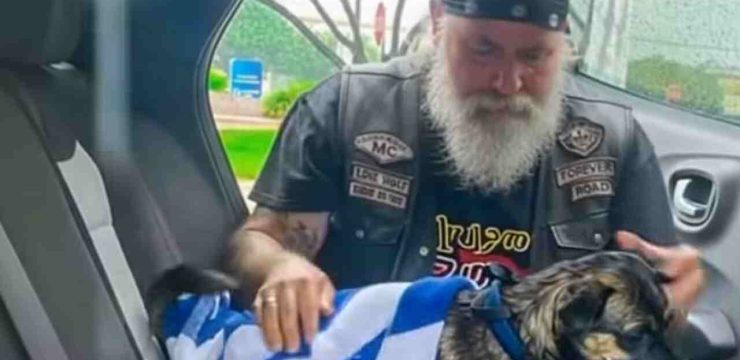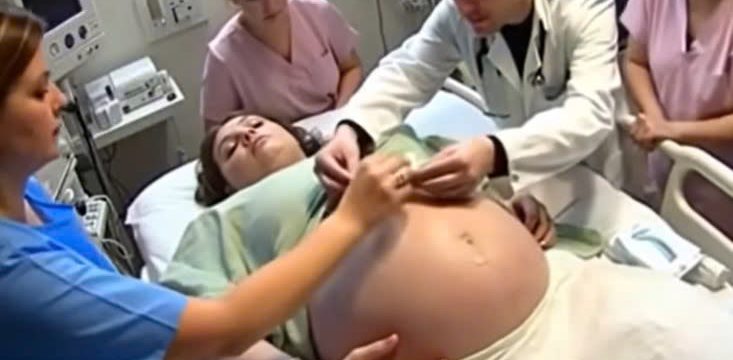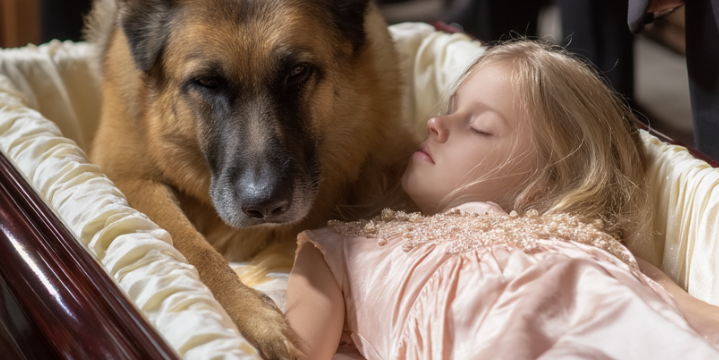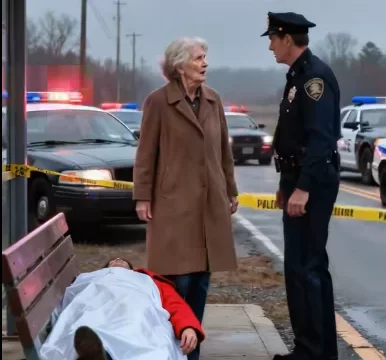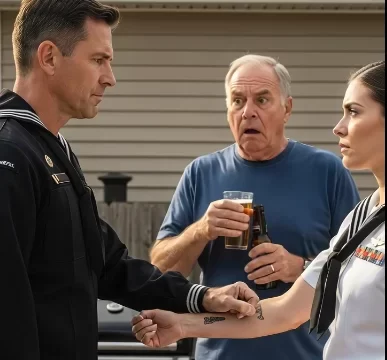Halo’s story began in silence—so quiet that even the soft rustle of the wind felt louder than her faint breath. She was found lying motionless on the cold ground, her frail body barely clinging to life. Every bone showed through her thin skin, her eyes hollow and dim with exhaustion. Her ribs rose and fell weakly as she trembled, too weak to stand, too frightened to move. What remained of her fur clung to her body in uneven patches, and deep scars told the silent story of years of cruelty. One of her eyes was clouded, possibly blind, and her ears had been brutally cut short—clear signs of a life marked by unimaginable neglect.
When rescuers first laid eyes on Halo, they were heartbroken. It was clear she had been through a life no creature should ever endure. They believed she had been used solely for breeding, a life of constant confinement and suffering, until she was no longer “useful” and cruelly discarded. Yet even in that desperate state, her eyes—though weary and frightened—still carried a faint spark, a small glimmer of hope that someone might finally show her kindness.
The rescue team knew they had to act gently. Halo was terrified, hiding deep within thick brush as if trying to disappear from the world that had failed her. The rescuers knelt on the ground, speaking softly, offering bits of food with open hands. For a long time, she didn’t move, her body stiff with fear. But hunger eventually overcame her hesitation. Step by step, she crept forward, trembling, her nose twitching as she reached for the food. She ate quickly, desperately, confirming how long she had been starving. That moment—simple and fragile—marked the beginning of her second chance at life.
Once she was close enough, one rescuer carefully looped a leash around her neck. Halo didn’t resist. She simply stood still, eyes wide, as if uncertain whether this was rescue or another form of harm. The team lifted her gently into their vehicle and began the drive to safety. The air inside the car was quiet except for the soft hum of the engine and the faint sound of Halo’s tired breathing. One rescuer reached back and rested a hand on her side, whispering comforting words she couldn’t understand but somehow seemed to feel.
At the rescue center, Halo’s healing journey began immediately. She received medical attention to treat her injuries and infections. She was bathed, fed small meals, and wrapped in warm blankets. Each day brought slow but steady progress. Her caretakers watched her closely—how she flinched at sudden movements, how her eyes darted around every corner. Trust, for her, would take time. But love has a way of reaching even the most wounded hearts.
As the days turned into weeks, something beautiful began to happen. Halo started to recognize the people who cared for her. She wagged her tail—a small, hesitant motion at first, but it was enough to bring tears to her rescuers’ eyes. She began to eat without fear, to walk around her new surroundings with curiosity. When the caretakers’ young child came to visit, Halo’s gentle nature truly shone. She would rest her head on the child’s lap, close her eyes, and sigh as if finally letting go of the weight she had carried for so long.
Her transformation was nothing short of miraculous. Within just six weeks, Halo no longer resembled the fragile creature who had once clung to life in the dirt. Her coat grew soft and shiny again, her body filled out with strength and vitality. She loved taking short walks under the sun, feeling the warmth she had once been denied. And she discovered a particular joy for ice cream—licking it eagerly from her rescuer’s hand, her tail wagging with delight. Every small moment became a victory, every breath a reminder of resilience.
Word of Halo’s recovery spread through the rescue community and beyond. Photos of her transformation—once skeletal, now radiant with health—touched hearts around the world. Messages of encouragement poured in, each one a testament to the power of compassion. Then, one day, a message arrived from a family who had followed her journey from the start. They said they couldn’t stop thinking about her. They wanted to give her the forever home she deserved.

When Halo met her new family, it was as if she understood her life was finally changing for good. She approached them cautiously at first, tail low but wagging, her eyes searching for reassurance. The moment they knelt to greet her, she leaned in, pressing her head gently into their hands. It was her way of saying she was ready—to love and be loved again.
Today, Halo lives in a beautiful home filled with warmth, laughter, and affection. She has a new canine sibling to play with and a family who treasures her beyond measure. Her days are filled with long walks, cozy naps, and endless cuddles. Sometimes she still looks up at her owners with those soulful eyes, as if to say thank you for believing in her when no one else did.

Her story serves as a reminder that kindness can heal even the deepest wounds. Halo’s journey from fear to freedom shows that with patience, care, and love, even the most broken souls can find peace again. She is more than a rescue story—she is living proof of hope’s quiet power, a symbol of the light that can emerge from even the darkest past.
As she runs through the grass, her golden fur shining in the sunlight, it’s hard to imagine the suffering she once endured. Her scars remain, faint but visible, a part of her history—but they no longer define her. They are the marks of a survivor. Halo is no longer the trembling dog who lay motionless and forgotten. She is joy itself—alive, cherished, and finally home.
